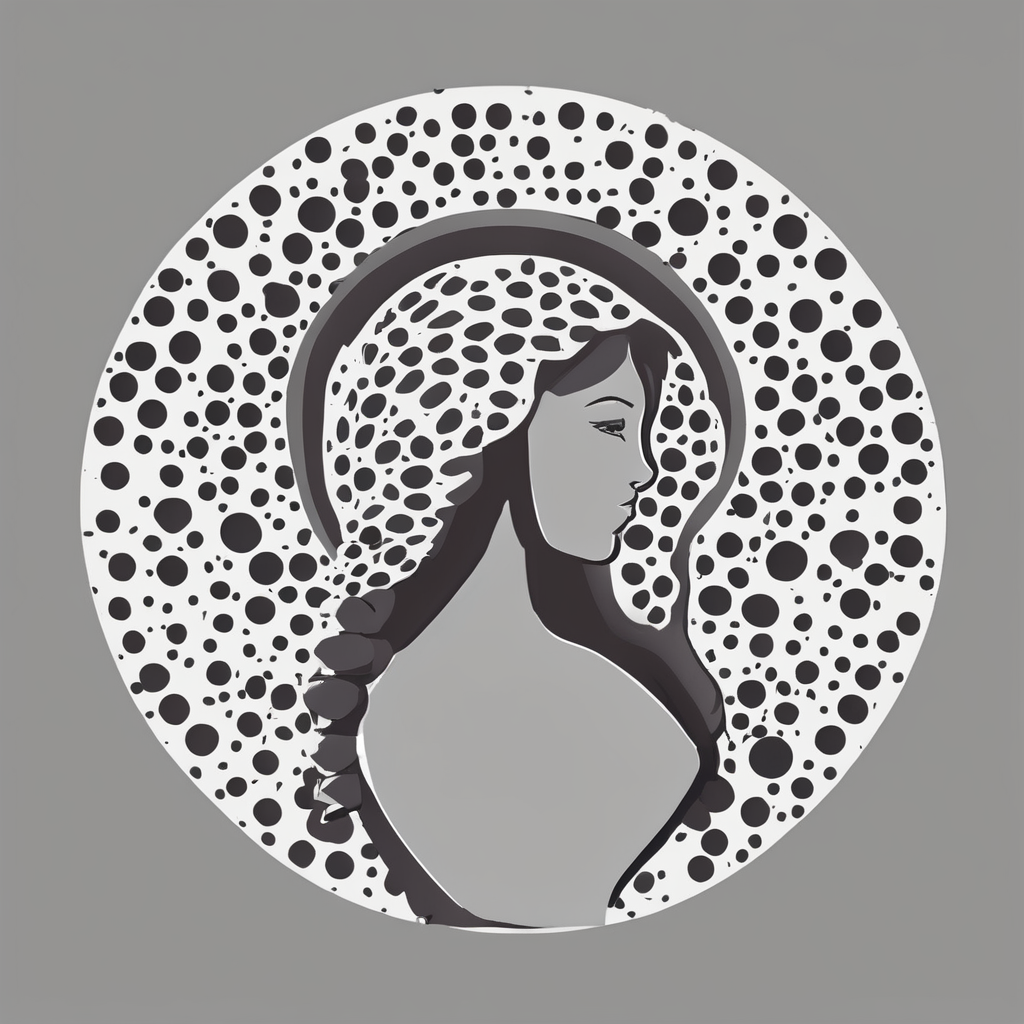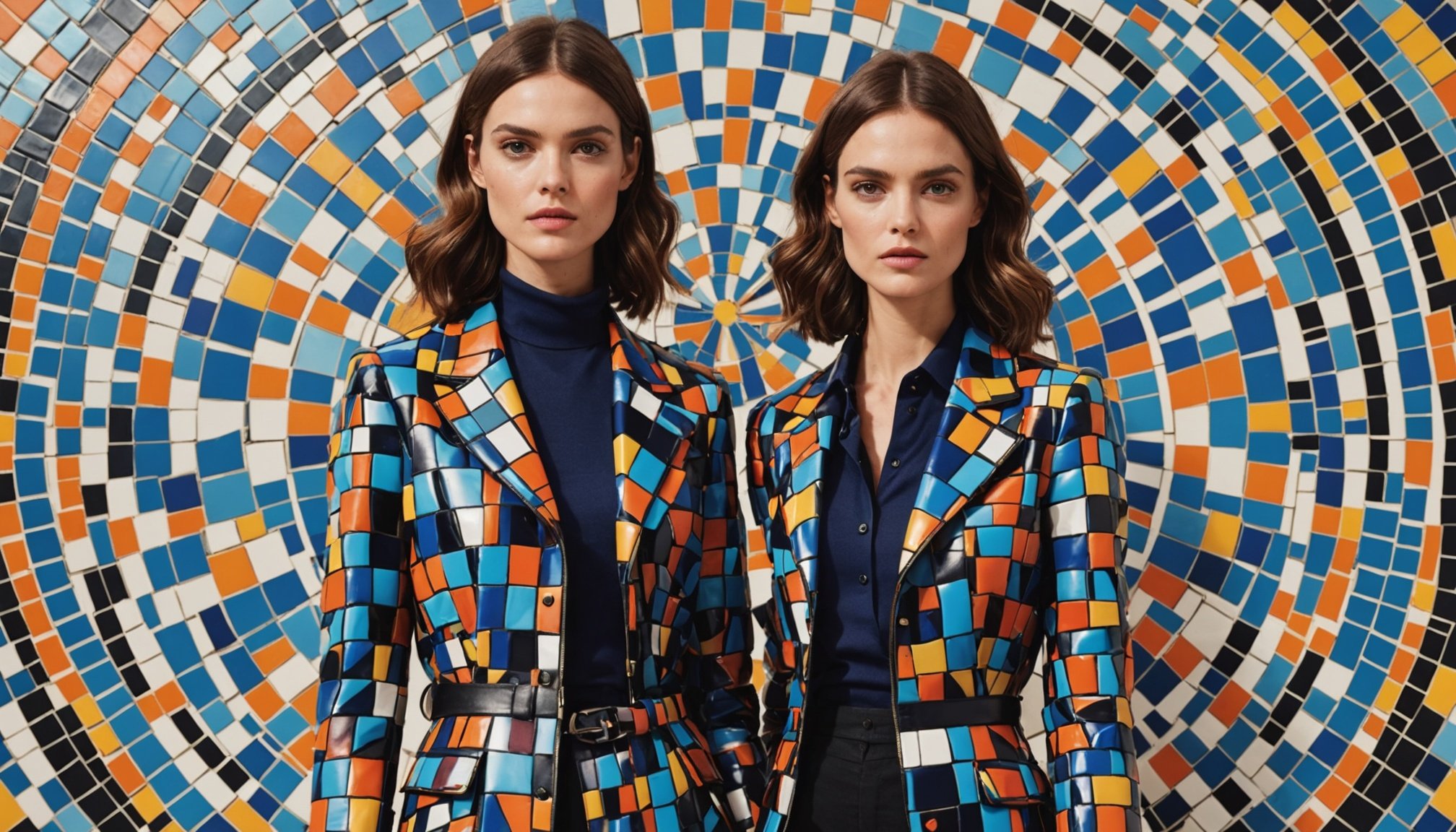Understanding Mosaic Prints
Mosaic prints have long since captivated art enthusiasts with their intricate designs and vivid colors. Originating in ancient cultures, these prints have evolved, embracing both traditional and modern aesthetics. The history of mosaic prints traces back to early civilizations where artisans meticulously arranged small pieces, creating images that conveyed rich storytelling and religious narratives.
Styles and Types of Mosaic Prints
There are various types of mosaic prints that suit different tastes and contexts. Traditional styles often favor geometric patterns and earthy tones. Conversely, modern mosaic prints break from convention by experimenting with vibrant designs and abstract forms. From intricate geometric designs to breathtaking scenes, mosaic prints offer a diverse range for artistic expression.
Also read : Revamp Your Office Look: Top Tips for Adding Metallic Accessories to Elevate Your Professional Wardrobe
The Role of Vibrant Colors
In mosaic art, vibrant colors play a pivotal role. They not only draw the eye but evoke emotion and depth. Whether in a classic Roman villa or contemporary art gallery, these colors breathe life into the art, creating dynamism and allure. By understanding the diverse styles and roles of color in mosaic prints, one can appreciate the complexity and beauty that these artworks impart.
Principles of Art Direction
Art direction blends design principles and visual composition, shaping the visual aesthetic of a project. At the core of effective art direction are several key principles, including balance, contrast, and alignment. These principles guide how components interact visually within a design, ensuring harmony and coherence. Think of these elements as the grammar of a visual language, each playing a part in crafting compelling design narratives.
Also read : Upgrade Your Professional Look: Key Tips for Mastering a Wide Leather Belt in Corporate Fashion
Art direction profoundly influences design aesthetics. By applying these principles, artists can create visuals that evoke emotional responses, tell a story, or convey a brand message effectively. The interplay of shapes, colours, and textures curated by an art director allows viewers to experience a designed space or image in a cohesive manner, reinforcing the intended mood and message.
Incorporating mosaic prints showcases the versatility of art direction. These dynamic patterns can bring rich texture and vivid colour into a composition, adding depth and intrigue. Strategic placement and integration of mosaic prints can transform a simple layout into a complex tapestry, enhancing both visual interest and narrative depth within art direction. Here, the principles of balance and contrast are crucial, as they help to integrate these intricate elements without overwhelming the entire composition.
Color Theory in Mosaic Design
When delving into mosaic design, an understanding of color theory is paramount. This foundational knowledge allows designers to craft compelling mosaics with thoughtful color combinations that captivate and engage viewers. At the heart of mosaic design lies the ability to create a harmonious color palette, one that balances hues, tones, and shades. This requires a nuanced approach, leveraging the color wheel to ensure complementary, analogous, or triadic schemes enhance the visual appeal.
The emotional impact of color plays a significant role in mosaic styling. Colors evoke feelings and set the tone for the entire piece, influencing how it is perceived and experienced. For instance, warmer hues like reds and oranges can convey energy and warmth, while cooler tones such as blues and greens can elicit calmness and tranquility.
In creating a mosaic, consider the emotional impact the color palette will have on the observer. An effective design not only harmonizes aesthetically but also resonates emotionally. By thoughtfully applying color theory, designers can imbue their pieces with depth and complexity, ensuring that each mosaic tells a unique and evocative story. Whether for a personal project or a public installation, color remains a powerful tool in mosaic artistry.
Techniques for Incorporating Mosaic Prints
Embracing mosaic prints can transform your design projects, offering a plethora of styling techniques and application methods. By understanding how to effectively incorporate these intricate patterns, you can breathe life into fashion, interiors, or graphic design.
Begin with layering techniques to combine mosaic prints with other patterns. Pairing them with subtle monochromes can help balance the visual impact. This contrast allows mosaic prints to stand out without overwhelming the space or garment. For a more harmonious blend, select complementary colours that accent each pattern.
Consider the practical techniques of application methods appropriate to your medium. For fashion, mosaic prints can be used as a focal point on garments, such as a striking blouse or a statement scarf. In interior design, integrate mosaic tiles as a feature wall or a backsplash that captures the eye. Meanwhile, graphic designers might opt for digital applications where mosaic elements can add dynamism to a layout or website.
Adapt your approach by exploring design tips specific to your chosen medium. Whether aiming for a subtle enhancement or a bold statement, the key lies in understanding the balance and harmony of mosaic prints with other elements, leveraging their artistic potential to create unique and expressive designs.
Visual Inspiration and Case Studies
When it comes to visual inspiration, the allure of vibrant mosaic prints cannot be overstated. These intricate designs not only captivate the eye but also inspire creativity across a multitude of industries. Whether used in a minimalist setting or a more extravagant environment, mosaic prints create a striking visual impact.
In real-world projects, these prints have been employed effectively by successful designers and artists who champion mosaic art. One trend to note is the use of mosaic prints in modern interior design. Designers often incorporate these prints to add depth and colour to spaces, transforming mundane interiors into works of art.
Case studies of prominent artists like Antoni Gaudí showcase how mosaic tiles can revolutionise architectural spaces. His work in Park Güell exemplifies a successful application of vibrant mosaics, adding fluidity and life to traditional building materials.
In the fashion industry, trends indicate a growing affinity for mosaic patterns in textiles. Designers like Peter Pilotto utilise mosaic prints to create clothing that stands out, offering a tapestry of colours that appeal to the fashion-forward individual.
By studying these notable examples, aspiring designers can find inspiration to make innovative use of mosaic prints in their own creative endeavors.
Tutorials and Resources for Learning
When delving into mosaic-inspired designs, step-by-step tutorials can be a treasure trove for both beginners and advanced enthusiasts. These tutorials provide a structured approach, allowing learners to grasp intricate design techniques, which can be crucial for creating visually compelling mosaics. From digital platforms to hands-on video guides, a variety of educational resources are available to illuminate your path to mastery.
For those seeking to bolster their skills further, several recommended books and online courses offer in-depth knowledge and practical exercises. These resources delve into the nuances of mosaic art, discussing aspects such as color theory, material selection, and modern digital applications.
Engaging with others in the crafting community can enrich your experience. Joining forums and groups dedicated to mosaic print enthusiasts not only offers a platform to exchange ideas but also fosters camaraderie and mutual learning. Participating in these community engagements provides an opportunity to receive constructive feedback, grasp new techniques, and nurture creativity.
With such a wealth of tutorials and educational resources at your disposal, mosaic art becomes a universally accessible pursuit, encouraging creativity and skill development in a supportive environment.
Challenges and Solutions in Mosaic Styling
Designing with mosaic prints comes with its own set of unique challenges. One frequent design challenge is achieving balance without overpowering other elements in a space. Problem-solving skills are crucial in adapting a mosaic’s intricate patterns into a coherent design narrative. Designers often grapple with coordinating these detailed prints with simpler elements to maintain an aesthetically pleasing composition.
Another common difficulty lies in problem-solving the size and scale of mosaic prints. Larger designs can overwhelm a room, while smaller patterns might lose their impact. To overcome these challenges, creative solutions such as combining mosaic prints with neutral tones or minimalistic components can be employed. This kind of juxtaposition can highlight the mosaic without allowing it to dominate the entire space.
Moreover, dealing with varied textures, materials, and colours requires innovative approaches. Experimentation and innovation are key in finding effective creative solutions. Encouraging designers to play with different mediums allows for unique and personalized styles to emerge. This spirit of exploration ensures that mosaic styling remains an exciting and rewarding facet of design, showcasing both versatility and individual expression. Designers are, thus, invited to embrace creativity and utilize these methodologies to advance their problem-solving capabilities.











